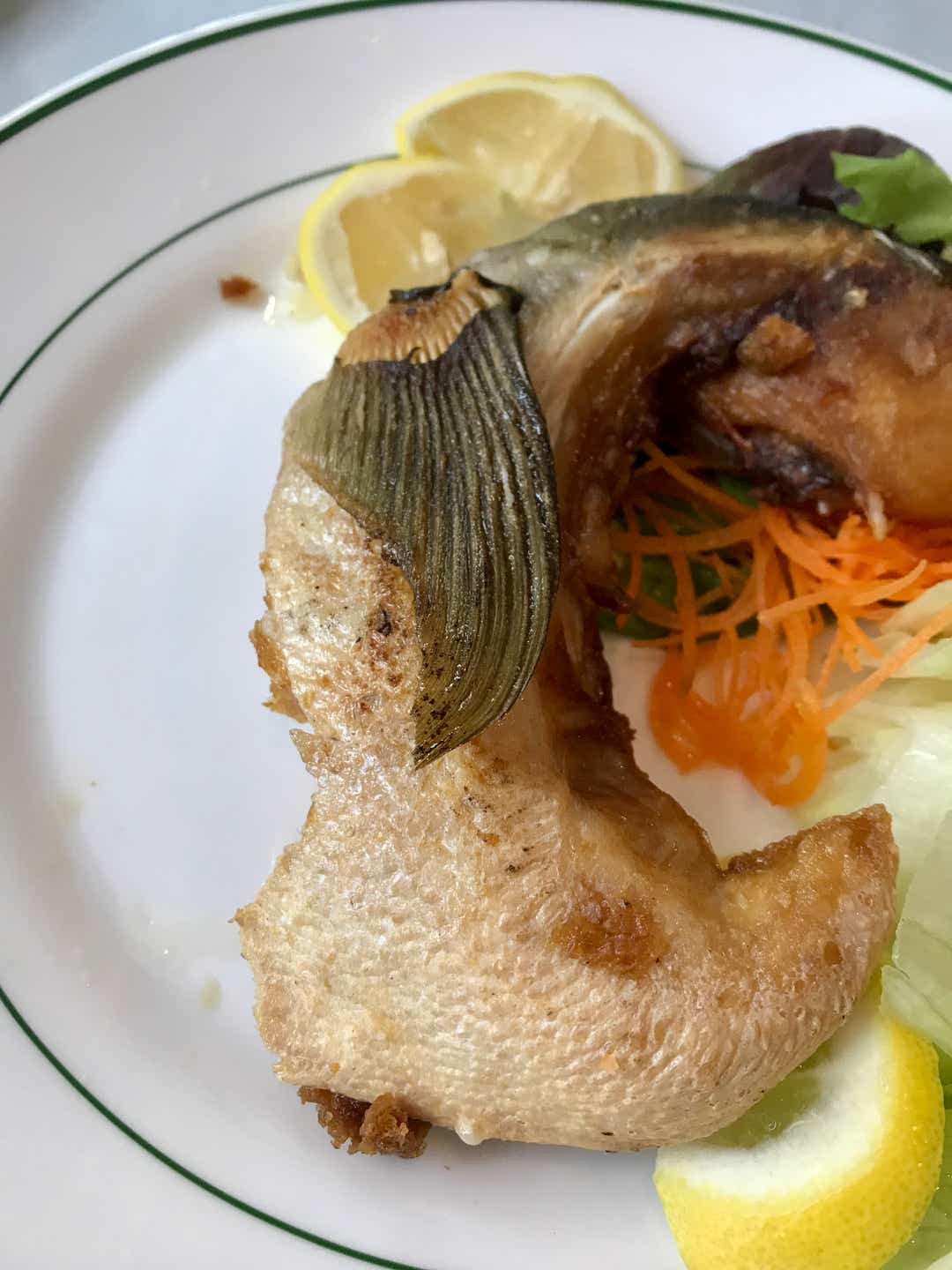
America, the rest of the world would like to know what you have against fish heads.
People sup on fish head curry in Singapore. Diners slurp fish head soup in Provence.
In Japanese restaurants, fish collar — the meaty, fatty cut right behind the gills — is often served as hamachi kama.
And here's why you shouldn't pass it up: It's arguably the best part of the fish.
In traditional butchery, said Rhubarb chef John Fleer, you might refer to a cut like this — delicious but a pain in the neck to harvest — as a butcher's cut.
"The piece that's kind of hard to get to, kind of awkward, but because it gets cooked on the bone it's tastier," he said. "It also extends to the belly area, so there's always this little juicy tidbit of fish belly attached to it."
Fleer gets various whole fish from the coast — wreckfish, grouper and their big-boned ilk — and the kitchen saves the collars after processing to serve in various ways.
Perhaps you might find fish collar, basted with a General Tso's-style sauce and served with crisp Bibb lettuce leaves. It may come fried and served with various Korean-inspired condiments.
►Read more: Asheville's Rhubarb named on big "best restaurant" lists
At some Japanese restaurants, such as Hana Japanese Hibachi and Sushi Bar in downtown Asheville, it can be served rather unceremoniously with lemon slices and ponzu sauce for dipping.
But the common denominator is a deep flavor and tender texture, and that has nearly everything to do with bones, Fleer said.
"The reason we have always had whole trout and, almost every week, whole fish roasted in the oven is because when meat is roasted on the bone it's so much tastier."
And the collar, he said, is about the only way you can get that incomparable tenderness in an individual portion.
And there's another bonus: This cut is particularly rich with the omega-3 fatty acids every doctor and nutritionist keeps begging us to eat more of.
So why are some people so unnerved by this slice of fish?
Fleer thinks it could be the name. "It's funny because when you say 'collar,' it reads to the brain like some kind of organ or something."
But in a world full of food waste and scarcity, that people haven't found a way to love collar is a big shame.
A 2014 NPR story about the absurdity of throwing away tons of meaty fish heads noted the process of harvesting only fillets from can yield two to three pounds of head and scraps for every pound of boneless, skinless meat.
Aside from that, collar is simply delicious.
"It's no different than a spare rib or pork chop," Fleer said. "It's meat attached to bones. No organs, no nothing."
Fleer said he first saw the cut in champion of Low-Country cuisine Louis Osteen's kitchen. There, cooks set aside the collars from fish they were fabricating, seasoned them and roasted them in the oven on a sheet pan.
"And we all just picked on them for family meal," he recalled.
You don't have to be a culinary insider to try fish collar. Find it at Rhubarb at 7 S.W. Pack Square. Try the dinner menu at Hana, 5B Biltmore Ave. In Hendersonville, eat it at Umi, 633 North Main St.
https://www.citizen-times.com/story/entertainment/dining/2018/10/18/heads-up-why-you-should-always-order-fish-collar-restaurants/1564641002/Bagikan Berita Ini















0 Response to "Inside dish: Here's why you don't want to pass on the fish collar"
Post a Comment